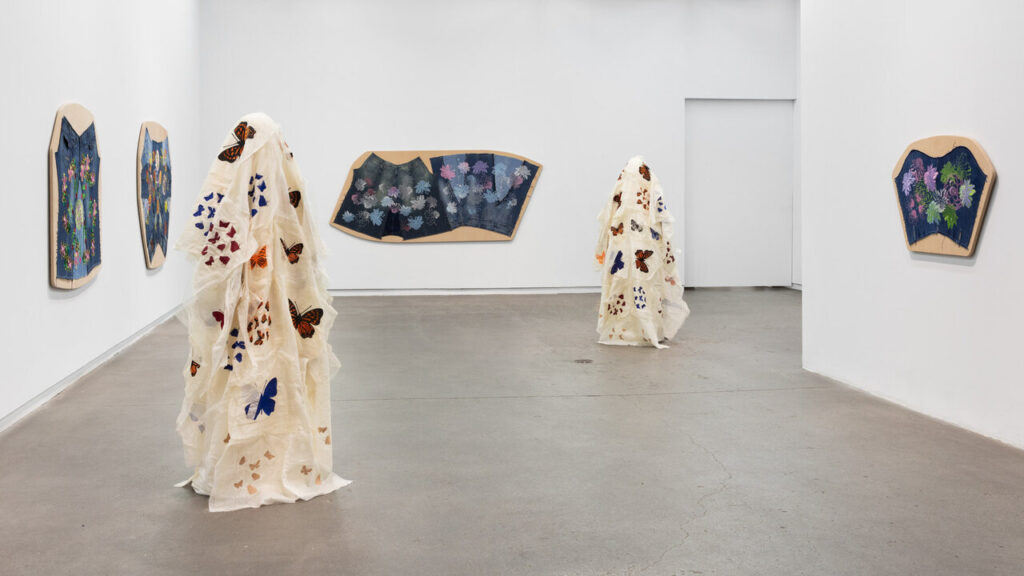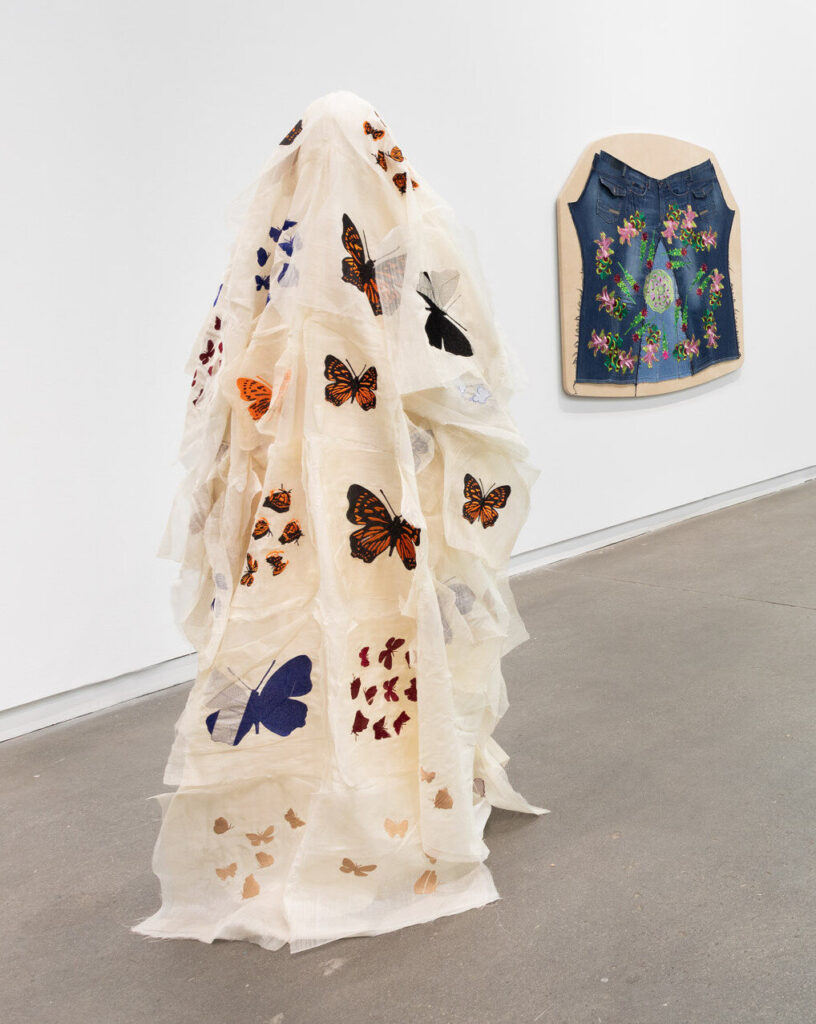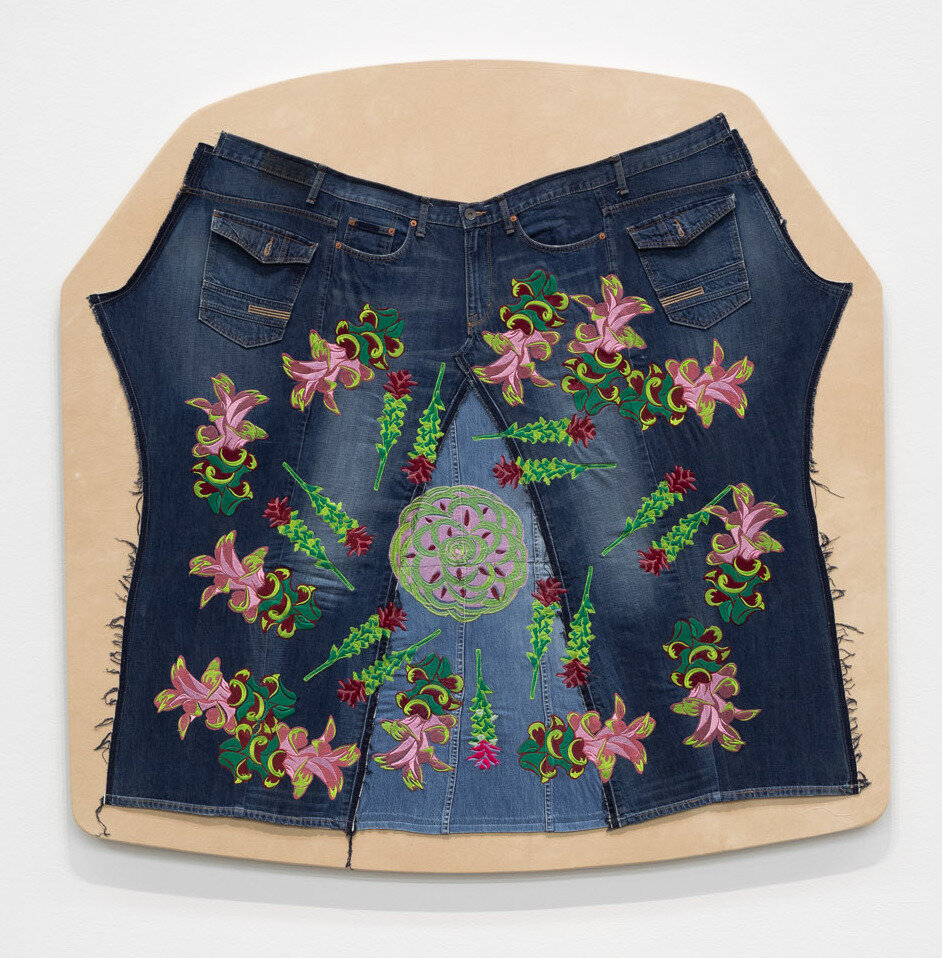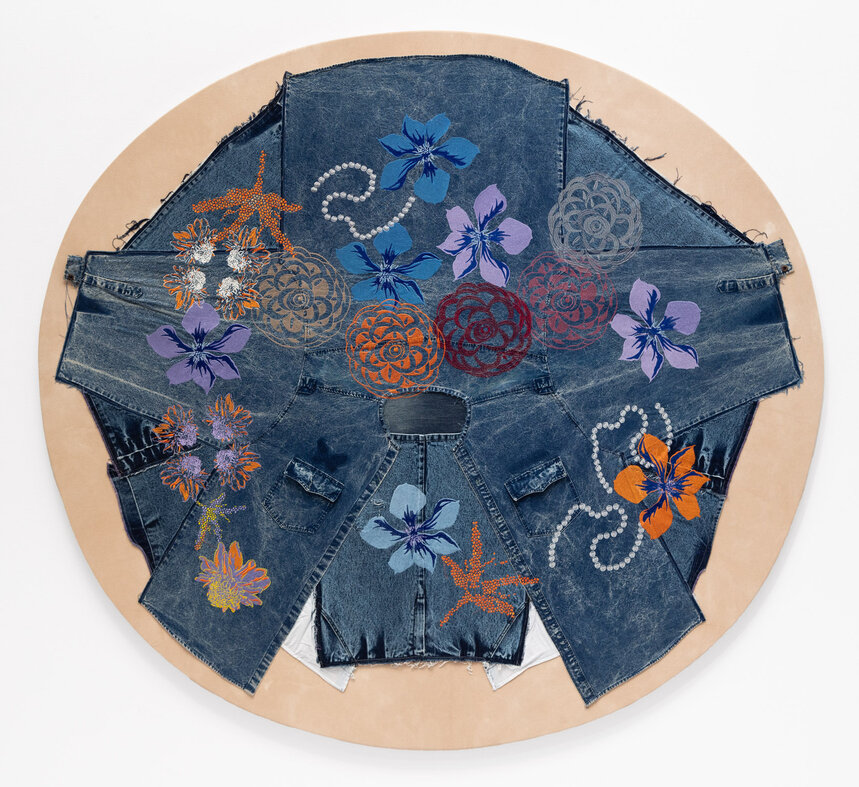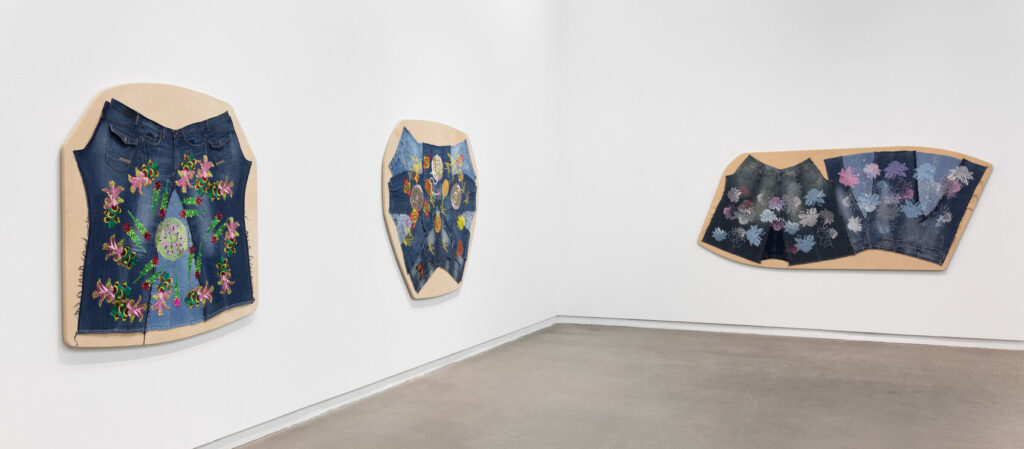With her new installation, Bouquets for Paradise, Stephanie Comilang’s work is a testament to the history, survival, hardships and dreams of the people of the Philippines. Comilang honours the intense labour and overlooked artistic vision of the exploited people of the Philippines by highlighting their experiences through culture.
The artist uses the monarch butterfly to lead the viewer through the exhibition at the Daniel Faria Gallery. Butterflies appear in both of the present editions of “Manton de Manila”, creating a dynamic sense of movement reminiscent of the waves and bold signs that the seafaring men, whom Stephanie Comilang aims to represent, rely on while out at sea.
Installation view, Stephanie Comilang: Bouquets for Paradise at Daniel Faria Gallery, 2024.
In her 2024 film, “Search for Life”, which is paired with this exhibition, the monarch butterfly serves as both a narrator and as a symbol of hope for two former seamen. In it, they share their stories and reflect on the abuse faced by the people of the Philippines under Spanish colonization. Having retired by the time of filming, one of the seafarers had turned to art and painted the figure which Comilang carefully adopts as the “Manton de Manila.”The fisherman’s vision is executed with the use of piña fabric, known for its delicate texture and breathability. Tens of pieces of fabric come together to veil a female mannequin, much like the traditional Filipino shawl with which the piña fabric is associated. The effects of colonization such as globalization and technological innovation are present in the butterfly’s pixilated design and use of machine embroidery, as well as the Chinese origin of the shawls which the Spanish appropriated and manufactured in Manila. Amid the layered history held by each of the piña fabric’s threads, the delicate and vibrant monarch butterfly emerges as a powerful symbol of resilience for the Filipino people. In rising out of its piña fabric-crafted background, the butterfly relates to the narrative of how the Philippines has held onto its complex history and cultural heritage through its perseverance and strength.
Installation view of Stephanie Comilang: Bouquets for Paradise with Manton de Manila (left)
The impact of modernization is also clearly reflected in pieces made from deconstructed denim and machine-embroidered designs. Stephanie Comilang uses women’s denim clothing—such as skirts, jeans, and jackets—and has reappropriated this attire to mirror the working class, acknowledging those who continue to be exploited for their labour. She has transformed these garments into unique forms that have been cut and re-assembled to create large, quasi-geometrical silhouettes. In addition, she incorporates the use of tea-dyed canvas as a background for the intricately rearranged denim pieces, with tea symbolizing Asian culture and reflecting the impact of trading in the 16th century.
Stephanie Comilang, Cocoon Curcuma, 2024, embroidered denim on tea-stained canvas over board, 52½ x 53 in.
Comilang is also blunt about historical reality through using the colour indigo. The colour indigo defines the exhibition and holds significance in having been used as a form of currency. Over the past five centuries, the Philippines, along with several Asian and African countries, has faced colonialization for their rich natural resources, including indigo plants. These resources were instrumental in the production of clothing that symbolized wealth and power among elites, but took these from the native people whose rich lands were used solely for colonizers’ vanity.
Stephanie Comilang, Fragilis, 2024, embroidered denim on tea-stained canvas over board, 65 x 71 in.
Comilang’s placement of the denim directly overshadowed the naturally sourced tea on the dyed canvas, obscuring it from the viewer’s gaze and suppressing its presence. This is reminiscent of how the powerful empires of Europe, such as Spain, imposed themselves on blank canvases — terra nullius — looking to obliterate the already established and harmonious societies that possessed their own rich culture. Moreover, her use of denim as a simultaneous symbol of both global powers and the working class furthers her fight for the awareness of the exploitation of Pilipino people by foreign powers for monetary gains.
Still, upon viewing these denim pieces, one notices the embroidered flora that breaks apart the sea of indigo. Once again, Comilang conveys a message of perseverance by incorporating native flowers from the Philippines. The flowers are set to reclaim the tradition and space of the original tea-dyed canvas, as it competes against denim for dominance, striving to assert its ethnic identity despite its colonizer’s overwhelming presence.
Stephanie Comilang, Akoya, 2024, embroidered denim on tea-stained canvas over board, 58¼ x 69 in.
Stephanie Comilang’s Bouquets for Paradise advocates for awareness of the histories and ongoing challenges faced by Filipino communities and underscores the importance of preserving cultural heritage amid globalization and modernization.
Installation view, Stephanie Comilang: Bouquets for Paradise at Daniel Faria Gallery, 2024
Antonella Pecora Ruiz
Images are courtesy of Daniel Faria Gallery. Photo: LF Documentation
*Exhibition information: Stephanie Comilang: Bouquets for Paradise, October 22 – December 14, 2024, Daniel Faria Gallery, 188 St Helens Ave. Toronto. Gallery hours: Tue – Fri 11 am – 6 pm, Sat 10 am – 6 pm.

